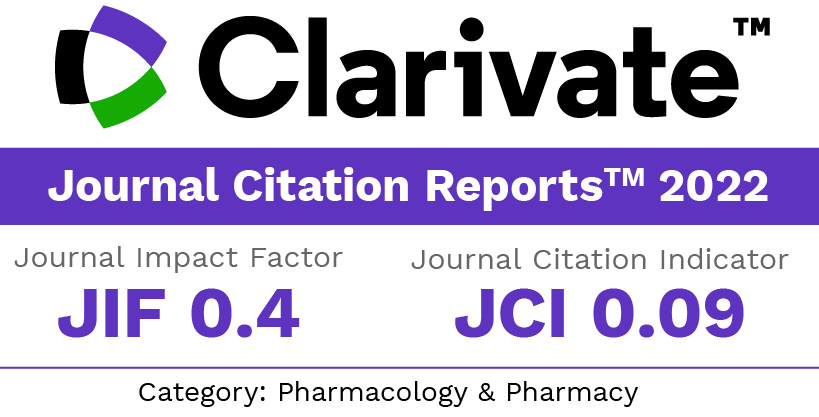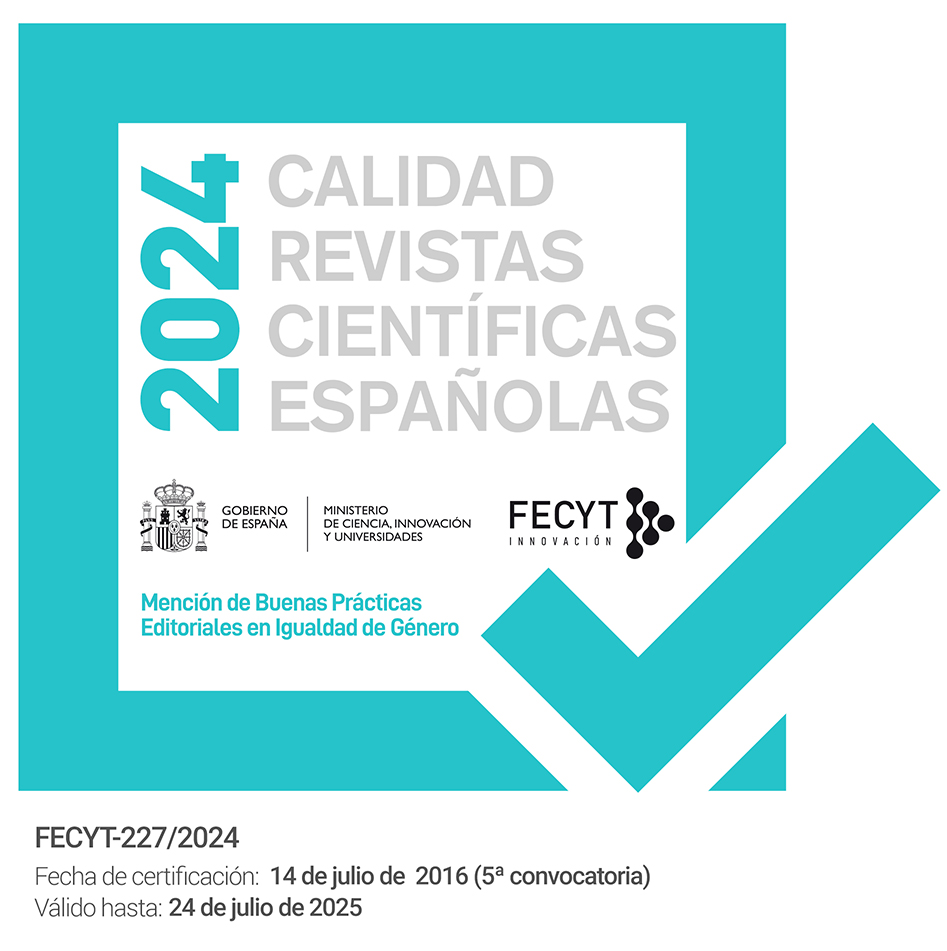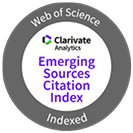Formulation and Evaluation of Quetiapine Fumarate Extended-Release Matrix Tablets Using Metolose 15000SR and HPMC K15CR
DOI:
https://doi.org/10.30827/ars.v66i4.33615Keywords:
Quetiapine fumarate; Metolose 15000SR; Hydroxypropylmethylcellulose K15CR; Extended-release matrix tabletsAbstract
Introduction: Quetiapine Fumarate (QF) is a second-generation antipsychotic used to treat schizophrenia and bipolar depression. Extended-release (ER) tablets help improve patient compliance and reduce side effects by slowing down drug absorption.
Method: In this study, QF-ER tablets were made using the wet granulation method with two polymers, Metolose 15000 SR and Hydroxypropylmethylcellulose (HPMC) K15CR, in different amounts. To check compatibility, QF was mixed with other ingredients and stored at room temperature for 15 days. There were no significant changes in color or odor, and infrared spectral analysis confirmed that QF was compatible with the polymers and other excipients, with no interactions. The prepared granules had good to excellent flowability, ensuring even tablet compression. The finished tablets were tested for weight, hardness, thickness, friability, drug content, drug release, and release kinetics.
Results: All formulations had a good appearance without defects, and all values met pharmacopeial standards. Among the five formulations, F5 showed the best performance, releasing 98.77 % of the drug over 24 hours, like the market sample (97.21 % in 24 hours). The drug release from F5 followed the Hixson-Crowell model (R² = 0.9997), indicating that the release was controlled by both tablet erosion and diffusion. The release exponent (n = 0.6123) suggested a combination of swelling and diffusion as the drug release mechanism.
Conclusions: F5 was identified as the best formulation, as it met all pharmacopeial requirements, had excellent physical properties, and provided a well-controlled, extended drug release for 24 hours, making it a strong alternative to the market.
Downloads
References
Möller HJ, Johnson S, Mateva T, Brecher M, Svensson O, Miller F, Meulien D. Evaluation of the feasibility of switching from immediate release quetiapine to extended release quetiapine fumarate in stable outpatients with schizophrenia: International Clinical Psychopharmacology. 2008; 23(2): 95-105. http://doi:10.1097/YIC.0b013e3282f2d42c
Mitali LS. A study of suicidal ideas and behaviour among patients with schizophrenia. Int J Life Sci Biotechnol Pharma Res. 2024; 13(1): 112-17.
Dongxia L, Li M and Yingying F. Can neurocognition, brain neurotrophic factor, triglyceride, total cholesterol predict suicidal ideation in first-episode Han Chinese patients with schizophrenia? Brain and Behavior 2024;14(5): e3499. http://doi:10.1002/brb3.3499
Lee H, Peng PH, Chiu NM, Huang YC, Lin PY, Hung CF, Lee Y, Wang LJ. The interrelationship of benefit finding, stigma, and suicide risk among patients with schizophrenia and their caregivers: A six-month follow-up study. In Healthcare 2024; 12(21): 2176. http://doi:10.3390/healthcare12212176
Zhu Q, Zhang XY. Correlation analysis and gender differences of cognitive function based on mini-mental state examination (MMSE) and suicidal tendency in patients with schizophrenia. BMC Psychiatry. 2024; 24(1): 8. http://doi:10.1186/s12888-023-05462-9
Sher L, Kahn RS. Suicide in Schizophrenia: An educational overview. Medicina. 2019; 55(7): 361. http://doi:10.3390/medicina55070361
Akhlaq M, Maryam F, Elaissari A, Ullah H, Adeel M, Hussain A, Ramzan M, Ullah O, Zeeshan Danish, M, Iftikhar, S, Aziz N. Pharmacokinetic evaluation of Quetiapine Fumarate controlled release hybrid hydrogel: a healthier treatment of schizophrenia. Drug Delivery. 2018; 25(1): 916-27. http://doi:10.1080/10717544.2018.1458922
Garbacz G, Kandzi A, Koziolek M, Mazgalski J, Weitschies W. Release characteristics of Quetiapine Fumarate extended release tablets under biorelevant stress test conditions. AAPS PharmSciTech. 2014; 15(1): 230-36. http://doi:10.1208/s12249-013-0050-2
Hamsa A, Karumandampalayam Shanmugaramasamy K, Kariyarambath P, Kathirvel S. Quetiapine fumarate: A review of analytical methods. Journal of Chromatographic Science, 2023; 61(9): 892-906. http://doi:10.1093/chromsci/bmac100
Ozcelik E, Mesut B, Aksu B, Ozsoy Y. Quetiapine Fumarate extended-release tablet formulation design using artificial neural networks. Turk J Pharm Sci. 2017; 14(3): 213-21. http://doi:10.4274/tjps.97720
Wheless JW, Phelps SJ. A clinician’s guide to oral extended-release drug delivery systems in epilepsy. J Pediatr Pharmacol Ther. 2018; 23(4): 277-92. http://doi:10.5863/1551-6776-23.4.277
Bhowmik D, Bhanot R, Kumar KPS. Extended release drug delivery-an effective way of novel drug delivery system. Res J Pharm Dosage Forms Technol. 2018; 10(4): 233-44. http://doi:10.5958/0975-4377.2018.00035.6
Gavan A, Porfire A, Marina C, Tomuta I. Formulation and pharmaceutical development of quetiapine fumarate sustained release matrix tablets using a QbD approach. Acta Pharmaceutica. 2017; 67(1): 53-70. http://doi:10.1515/acph-2017-0009
Metolose SR® HPMC for sustained release application - Shin Etsu SE Tylose GmbH & Co. KG. Accessed March 11, 2025. https://www.setylose.com/en/products/healthcare/metolose-sr
Pan P, Svirskis D, Waterhouse Gin, Wu Z. Hydroxypropyl methylcellulose bioadhesive hydrogels for topical application and sustained drug release: The effect of polyvinylpyrrolidone on the physicomechanical properties of hydrogel. Pharmaceutics. 2023; 15(9): 2360. http://doi:10.3390/pharmaceutics15092360
Soni R, Jain AK, Jain UK. Formulation and evaluation of transdermal patch of antipsychotic drug to overcome nervous emotional disease. Asian J. Pharm. Res Dev. 2025; 13(1): 15-20. http://doi:10.22270/ajprd.v13i1.1497
Jain S, Shah RP. Drug-excipient compatibility study through a novel vial-in-vial experimental setup: A benchmark study. AAPS PharmSciTech. 2023; 24(5): 117. http://doi:10.1208/s12249-023-02573-0
Raja Sekharan T, Palanichamy S, Shanmuganathan S, Tamilvanan S, Thanga Thirupath A. Formulation and evaluation of Theophylline controlled release matrix tablets using Guar gum. ARS Pharmaceutica. 2009; 50(4): 205-14.
Santhanamariammal C, Raja Sekharan T, Lydia B, Ramkumar P. Formulation and evaluation of Prednisolone retention enema as dispersible tablet and vehicle for the treatment of ulcerative colitis. Letters in Applied NanoBioScience. 2019; 8(1): 545-52. https://doi.org/10.33263/LIANBS81.545552
Parasakthi N, Palanichamy T, Raja Sekharan T, Solairaj P. Formulation and evaluation of Metformin hydrochloride sustained release tablets. Int J Univers Pharm Bio Sci. 2015; 4(1): 276-85.
Raja Sekharan T, Palanichamy S, Shanmuganathan S, Karthikeyan A, Senthilkumar S, Thanga Thirupathi A. Formulation and evaluation of Theophylline controlled release matrix tablets using Xanthan gum. Der Pharmacia Lettre. 2009; 1(2): 93-101.
Sreekanth SK, Palanichamy S, Raja Sekharan T, Thanga Thirupathi A. Formulation and evaluation studies of floating matrix tablets of Nifedipine. Int J Pharma Bio Sci. 2010; 1(2): 1-8.
Raja Sekharan T, Sudha P, Palanichamy S, Thanga Thirupathi A. Formulation and evaluation of acid stabilized lansoprazole oral tablet by forming inclusion complex with the combination of cyclodextrin and tromethamine. Journal of Pharmacy Research. 2010; 3(12): 3018-22.
Ellakwa TE, Abu-Khadra AS, Ellakwa DES. Influence of physico-chemical properties of hydroxypropyl methylcellulose on quetiapine fumarate release from sustained release matrix tablets. BMC Chemistry. 2024; 18(1) :219. http://doi:10.1186/s13065-024-01311-2
Quetiapine Extended-Release Tablets. In United States Pharmacopeial Convention Committee of Revision (Ed), USP-NF Online (2023 ed) United States Pharmacopeial.
Raja Sekharan T, Palanichamy S, Tamilvanan S, Shanmuganathan S, Thanga Thirupathi A. Formulation and evaluation of hydroxypropyl methylcellulose-based controlled release matrix tablets for theophylline. Indian J Pharm Sci. 2011; 73(4): 451.
Downloads
Published
How to Cite
Issue
Section
License
Copyright (c) 2025 Raja Sekharan T

This work is licensed under a Creative Commons Attribution-NonCommercial-ShareAlike 4.0 International License.
The articles, which are published in this journal, are subject to the following terms in relation to the rights of patrimonial or exploitation:
- The authors will keep their copyright and guarantee to the journal the right of first publication of their work, which will be distributed with a Creative Commons BY-NC-SA 4.0 license that allows third parties to reuse the work whenever its author, quote the original source and do not make commercial use of it.
b. The authors may adopt other non-exclusive licensing agreements for the distribution of the published version of the work (e.g., deposit it in an institutional telematic file or publish it in a monographic volume) provided that the original source of its publication is indicated.
c. Authors are allowed and advised to disseminate their work through the Internet (e.g. in institutional repositories or on their website) before and during the submission process, which can produce interesting exchanges and increase citations of the published work. (See The effect of open access).























